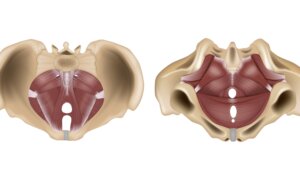Strength training does more than build muscle—it also gives your cells a deep clean.
Scientists have discovered that strength training activates a crucial cellular cleaning process that could potentially help find new treatments for heart disease and cancer, and even keep astronauts fit in space.
Activating the Body’s ‘Spring Cleaning’ Function
A recent
study published in Current Biology suggests that strength training not only develops strong muscles but also activates a cellular “spring cleaning” function essential for health.
The research highlights the importance of a protein called BAG3 in eliminating damaged cellular components.
BAG3 is a “very general” cellular protein, operating in immune cells and potentially in the kidney at the blood filtration barrier, Jörg Höhfeld, professor of molecular cell biology at the Institute for Cell Biology, University of Bonn, and also lead author of the study, told The Epoch Times.
Current data indicate that BAG3 dysfunction can lead to rapid muscle weakness and is associated with heart failure, a leading cause of death in many industrialized countries. The implications of the BAG3 system extend beyond muscle health, with mutations linked to Charcot-Marie-Tooth syndrome, a hereditary neurodegenerative disorder leading to motor impairments.
The findings emphasize the importance of strength training for healthy aging, aligning with World Health Organization guidelines for people 65 and older that recommend two full-body strength training workouts per week at a challenging level, Hohfeld said. A previous study, published in Autophagy, demonstrated that endurance exercise is not sufficient to activate the BAG3 maintenance system in muscle, he noted.
Only resistance exercise activates BAG3, allowing the protein to efficiently recognize and dispose of cellular waste, he said.
BAG3 and Heart Health
BAG3 pathogenic variants are a rare cause of familial dilated cardiomyopathy (DCM), Dr. Bani Azari, medical director of the Program for Cardiac Genetics, Genomics and Precision Medicine at Northwell Health, told The Epoch Times. This condition occurs in about 2 to 5 percent of patients with genetic risk factors for DCM. It causes the heart’s main pumping chamber to become enlarged and weakened, making it difficult for the heart to pump blood effectively, eventually leading to heart failure.
There is “significant variable penetrance” in families with BAG3-related DCM, she added, meaning that some family members will have early onset DCM while others will have mild, later-onset forms of the condition—and this occurs even when they carry the same genetic finding.
“This suggests there are environmental factors contributing to the phenotypic development of BAG3 DCM,” she said.
She said she views it as a progressive disease influenced by external lifestyle factors.
A review of studies published in 2022 found that lifestyle factors such as poor diet, drinking, smoking, substance abuse, and lack of physical activity may lead to earlier occurrence of diseases for which susceptibility remains dormant at least until middle or old age.
“I could see in the next 10 years or so development of therapeutic targets and trials based upon these findings,” Azari said. “It’s very exciting to think about the possibilities of molecular modulation of the BAG3 phospho-switches to specifically prevent or treat BAG3 DCM.”
Future Implications and Research
The research team is collaborating with professor Maja Köhn, chemist and cell biologist, to identify specific phosphatases, enzymes essential for maintaining proper functioning of cells, that could enhance BAG3 activation, potentially leading to drug developments for muscle-related diseases and nerve disorders.
The relevance of these findings also stretches to the realm of space travel. The German Space Agency has funded research into the mechanical activation of BAG3, focusing on astronauts experiencing muscle atrophy due to weightlessness.
Scientists are optimistic about developing therapies that could treat not only heart failure and nerve diseases but also cancer. “There is also extensive literature on the role of BAG3 in cancer,” Hohfeld said. “Mechanical forces are important for tumor cell development. One can therefore speculate that also in cancer cells the ability of BAG3 to respond to mechanical forces and to stimulate protein degradation is important.”
While the findings are still in early stages, Azari said she was optimistic about future developments. “I look forward to what we can develop over the next 5 to 10 years,” Azari said.














